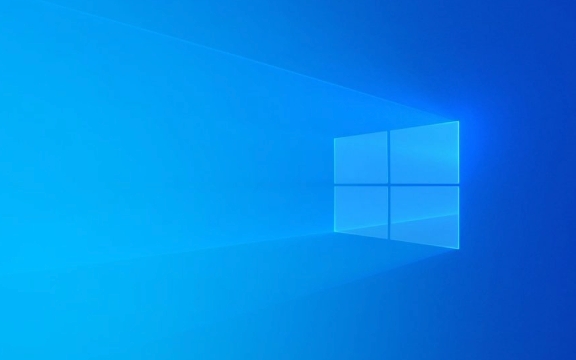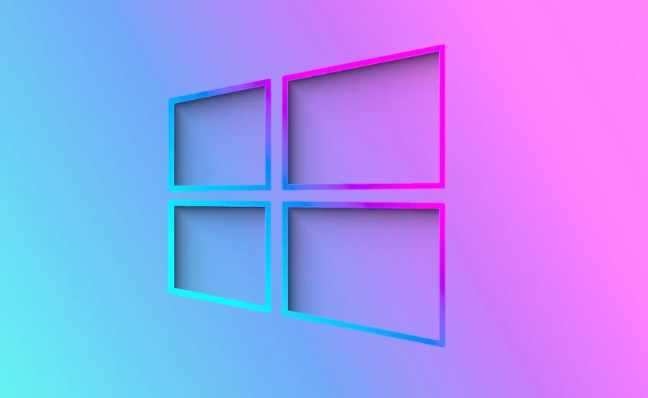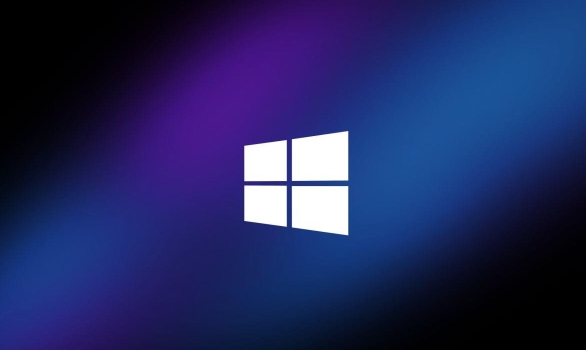Windows Registry is the core database of the Windows operating system and is used to store configuration information for the system and application. It adopts a hierarchical structure, including multiple root keys such as HKEY_CURRENT_USER and HKEY_LOCAL_MACHINE, which saves user and system-level settings respectively. The registry records various data associated with the file to the hardware configuration, and if the registry is corrupted, it may cause system exceptions. To open the Registry Editor, press Win R to enter regedit and press Enter. Careful action should be taken when editing the registry. It is recommended that 1. Back up the registry first; 2. Do not delete unknown items at will; 3. Make sure to understand the role of modifying the content; 4. Use administrator permissions to run the editor. Common operations include finding, modifying, adding or deleting key values, but incorrect operations may cause serious problems, so novices should modify them under clear guidance or use third-party tools to assist in completing them.

What is Windows Registry? Simply put, it is a database that stores operating system and application settings. You can think of it as the "brain" of Windows, which saves system configuration, user preferences, hardware information and other content. Once there is a problem with Registry, the system may run abnormally.

If you need to modify some hidden settings or fix specific issues, you may need to edit the registry. However, this operation has certain risks, and the error correction may cause the program to fail to run or even the system to crash. Therefore, be careful before starting, and it is recommended to back up the registry first.
What is Windows Registry?
Windows Registry is essentially a hierarchical database that records various configuration items of the system and software. For example, if you change the default opening method of a certain file type, this information may be written to the registry.
It consists of multiple "keys" and "values" similar to the relationship between folders and files. Common registry root keys include HKEY_CURRENT_USER and HKEY_LOCAL_MACHINE , which correspond to the settings of the current user and the entire system respectively.

How to open the Registry Editor?
To edit the registry, you must first open the Registry Editor. The method is very simple:
- Press
Win Rto open the "Run" window - Enter
regeditand press Enter - If the system prompts permission problems, click "Yes"
After opening it, you will see a tree-like structure on the left and a specific key-value pair on the right. The interface looks a bit complicated, but as long as you know where you are looking for, it is actually not difficult to operate.

Basic tips for editing registry
Editing the registry is usually to enable hidden features, fix certain issues, or disable unnecessary services. Here are some basic operations:
- Find target items : Use the "Edit > Find" function of the top menu to enter keywords to quickly locate
- Modify key values : Double-click the entry on the right to modify the numerical data (be careful not to change the type randomly)
- Add new item/value : select "New" in the blank space of right-click to create a new key or value
- Delete unwanted items : press the Delete key after selecting (use with caution)
For example: If you want to close a startup item, you may need to delete the corresponding entry under HKEY_CURRENT_USER\Software\Microsoft\Windows\CurrentVersion\Run .
What should I pay attention to when editing the registry?
The registry is not a place to move casually. There are several things to keep in mind:
- Backup the registry again : Select a primary key in the registry editor, right-click and select "Export" to save a backup
- Don't delete unknown entries at will : Many registry entries are automatically created by the system, deleting them may cause problems
- Understand the meaning of each parameter : Online tutorials may not be applicable to your system version, it is best to confirm clearly before modifying them
- Run regedit with administrator privileges : Some registry keys require administrator privileges to be modified
If you are not sure about the function of a certain item, the best way is to check the information first, or give up the modification directly.
Basically that's it. Although the registry is powerful, it is also easy to operate incorrectly. Newbie recommends only modifying the clear guidance section, or using third-party tools to complete the security modification.
The above is the detailed content of What is Windows Registry and how to edit it. For more information, please follow other related articles on the PHP Chinese website!

Hot AI Tools

Undress AI Tool
Undress images for free

Undresser.AI Undress
AI-powered app for creating realistic nude photos

AI Clothes Remover
Online AI tool for removing clothes from photos.

Clothoff.io
AI clothes remover

Video Face Swap
Swap faces in any video effortlessly with our completely free AI face swap tool!

Hot Article

Hot Tools

Notepad++7.3.1
Easy-to-use and free code editor

SublimeText3 Chinese version
Chinese version, very easy to use

Zend Studio 13.0.1
Powerful PHP integrated development environment

Dreamweaver CS6
Visual web development tools

SublimeText3 Mac version
God-level code editing software (SublimeText3)

Hot Topics
 How to remove password from Windows 11 login
Jun 27, 2025 am 01:38 AM
How to remove password from Windows 11 login
Jun 27, 2025 am 01:38 AM
If you want to cancel the password login for Windows 11, there are three methods to choose: 1. Modify the automatic login settings, uncheck "To use this computer, users must enter their username and password", and then restart the automatic login after entering the password; 2. Switch to a passwordless login method, such as PIN, fingerprint or face recognition, configure it in "Settings>Account>Login Options" to improve convenience and security; 3. Delete the account password directly, but there are security risks and may lead to some functions being limited. It is recommended to choose a suitable solution based on actual needs.
 I Became a Windows Power User Overnight With This New Open-Source App from Microsoft
Jun 20, 2025 am 06:07 AM
I Became a Windows Power User Overnight With This New Open-Source App from Microsoft
Jun 20, 2025 am 06:07 AM
Like many Windows users, I am always on the lookout for ways to boost my productivity. Command Palette quickly became an essential tool for me. This powerful utility has completely changed how I interact with Windows, giving me instant access to the
 How to uninstall programs in Windows 11?
Jun 30, 2025 am 12:41 AM
How to uninstall programs in Windows 11?
Jun 30, 2025 am 12:41 AM
There are three main ways to uninstall programs on Windows 11: 1. Uninstall through "Settings", open the "Settings" > "Apps" > "Installed Applications", select the program and click "Uninstall", which is suitable for most users; 2. Use the control panel, search and enter "Control Panel" > "Programs and Functions", right-click the program and select "Uninstall", which is suitable for users who are accustomed to traditional interfaces; 3. Use third-party tools such as RevoUninstaller to clean up more thoroughly, but pay attention to the download source and operation risks, and novices can give priority to using the system's own methods.
 How to run an app as an administrator in Windows?
Jul 01, 2025 am 01:05 AM
How to run an app as an administrator in Windows?
Jul 01, 2025 am 01:05 AM
To run programs as administrator, you can use Windows' own functions: 1. Right-click the menu to select "Run as administrator", which is suitable for temporary privilege hike scenarios; 2. Create a shortcut and check "Run as administrator" to achieve automatic privilege hike start; 3. Use the task scheduler to configure automated tasks, suitable for running programs that require permissions on a scheduled or background basis, pay attention to setting details such as path changes and permission checks.
 Windows 10 KB5061087 fixes Start menu crash, direct download links
Jun 26, 2025 pm 04:22 PM
Windows 10 KB5061087 fixes Start menu crash, direct download links
Jun 26, 2025 pm 04:22 PM
Windows 10 KB5061087 is now rolling out as an optional preview update for those on version 22H2 with Start menu fixes.
 Microsoft: DHCP issue hits KB5060526, KB5060531 of Windows Server
Jun 26, 2025 pm 04:32 PM
Microsoft: DHCP issue hits KB5060526, KB5060531 of Windows Server
Jun 26, 2025 pm 04:32 PM
Microsoft confirmed that the DHCP server service might stop responding or refuse to connect after the June 2025 Update for Windows Server.
 Windows 11 Is Bringing Back Another Windows 10 Feature
Jun 18, 2025 am 01:27 AM
Windows 11 Is Bringing Back Another Windows 10 Feature
Jun 18, 2025 am 01:27 AM
This might not be at the top of the list of features people want to return from Windows 10, but it still offers some usefulness. If you'd like to view the current minutes and seconds without turning on that display in the main taskbar clock (where it
 Building Your First Gaming PC in 2025: What You Actually Need
Jun 24, 2025 am 12:52 AM
Building Your First Gaming PC in 2025: What You Actually Need
Jun 24, 2025 am 12:52 AM
In the past, I always viewed the i5 lineup as anemic when it came to gaming. However, in 2025, a mid-range CPU is more than enough to start your gaming journey. Many games still don’t fully utilize multi-core performance as well as they could, so






